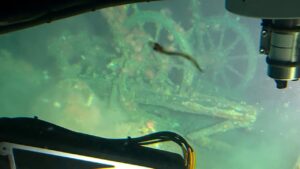For the aspiring polar sledder, gaining the necessary experience to head off alone on the ice is difficult. Unlike kayaking or climbing, you can’t just hone your skills at the local crag or river. Learning the dark arts of polar travel requires a serious outlay of cash and time, and the ability to travel to remote places.
For those with their sights set on big things in Antarctica, the Arctic Ocean, or the Canadian High Arctic, you need additional training in glacier travel and polar bear safety. For those who want to take their first steps in polar travel, ExWeb has created a summary of three classic cold-weather training grounds. Each varies in seriousness and difficulty.
Scandinavia
Unless you live in North America, this is the ideal place to learn sledding and winter campcraft. Norway, Sweden and Finland boast a number of plateaus and mountains that are both accessible and offer polar-type conditions. In the south of Norway lies Europe’s largest mountain plateau, Hardangervidda. It was used by Amundsen and Shackleton as a training ground and was the setting for the famous Heroes of Telemark raid during WWII.
Above 66°N, you have the slightly more frigid Finnmarksvidda, which covers a whopping 22,000 square kilometers and is the land of the once nomadic Sami people. Further north still, the archipelago of Svalbard gives the opportunity to learn about sea ice travel and polar bear defence.

The Hardangervidda Plateau. Photo: Matt Pycroft Coldhouse
Each of these regions has outdoor shops where you can rent pulks, skis and other specialist cold weather kit before heading off independently. If you’re not quite at that level of experience, guides offer both training courses and mini-expeditions. For example, ALE guide Carl Alvey runs a polar and snowkiting training business from the edge of Hardangervidda, as do other respected guides such as Paul Landry. Down the road in Finse, Hannah McKeand runs an excellent polar training course. Up in Finnmark, Borge Ousland’s company runs a guided crossing of the plateau. Finally, a variety of Norwegian and British companies, such as Bergans Adventures, provide guided experiences. In Svalbard, guides are likewise plentiful, with master guide Eric Philips offering a particularly comprehensive training experience.
North of the Arctic Circle, in Swedish Lapland, the Kungsleden or Kings Trail winds for about 450km through barren passes, glacial valleys and woodland trails. Other Swedish options include the mountains of Sarek National Park in the north. Other options include parts of Finnish Lapland and even Iceland.

Finnmarksvidda Plateau. Photo: visitnorway.com
In most of these areas, temperatures may drop well into the minus 30s during winter and early spring, and they have enough space for a multi-week loop. Some also have potential for glacier travel (e.g. Hardangervidda, Sarek, Svalbard), and you can certainly learn how to drive dog teams in some parts of Scandinavia too, although for this, Canada — with its scrappy, tough-as-nails Eskimo dogs — may be a better bet.
Canada
If you’re based in North America, it doesn’t make sense to jet to Europe when you have equal or better training grounds closer by. The accomplished polar traveler Eric Larsen runs a polar training course in northern Minnesota.
Ramping it up a level, the Northwest Territories can offer a serious expedition in its own right. From the hub of Yellowknife, frozen Great Slave Lake is within reach. Temperatures routinely drop into the minus 40s. Further east, the featureless terrain of the Barrenlands: If you can navigate here, you can navigate anywhere. No sea ice, glaciers or bears, but plenty of room to sled for a month, if you’re creative.
Although Nunavut’s capital, Iqaluit, doesn’t even reach the Arctic Circle, Baffin Island is true Arctic, yet it’s relatively accessible by jet from Ottawa or Montreal. Here, world-class polar guide and ExWeb ambassador Sarah McNair-Landry runs a guiding business where you can get schooled in polar travel, driving dog teams and snowkiting. For those with existing skills, the east coast of Baffin provides 1,000km of stunning fiords requiring bear defence skills. Inland, the Barnes and Penny Ice Cap offer glacier travel. Akshayuk Pass, in Auyuittuq National Park, is a short but spectacular corridor past world-class monoliths Mounts Thor and Asgard. Summer or winter, Akshayuk is often a first-time Baffin visitor’s introduction to the arctic islands.

Eric McNair-Landry slicing along the sea ice of Baffin Island. Photo: Erik Boomer
Greenland
A crossing of the Greenland Ice Sheet is often the last step before a full Antarctic or Arctic Ocean expedition. Greenland is costlier than Scandinavia or Iqaluit and involves mandatory insurance bonds. Regulations also prohibit solo expeditions on the so-called Inland Ice.
The classic east to west route from Isortorq to Kangerlussuaq is available as a guided expedition by many major operators, such as Borge Ousland. Logistical providers such as Tangent Expeditions or Robert Peroni can help those who prefer to travel independently. For this, you will need both crevasse training and polar bear defence experience, although bears are rare in the typical training areas of Greenland.
If a full Ice Sheet crossing is not your bag, shorter routes in Jameson or Liverpool Land lie reasonably close to the airport at Constable Point, in East Greenland. For those with more modest ambitions, neither bears nor glaciers feature on the 160km Arctic Circle Trail between Kangerlussuaq and Sisimiut.

Ski touring in East Greenland. Photo: Ben Tibbetts






